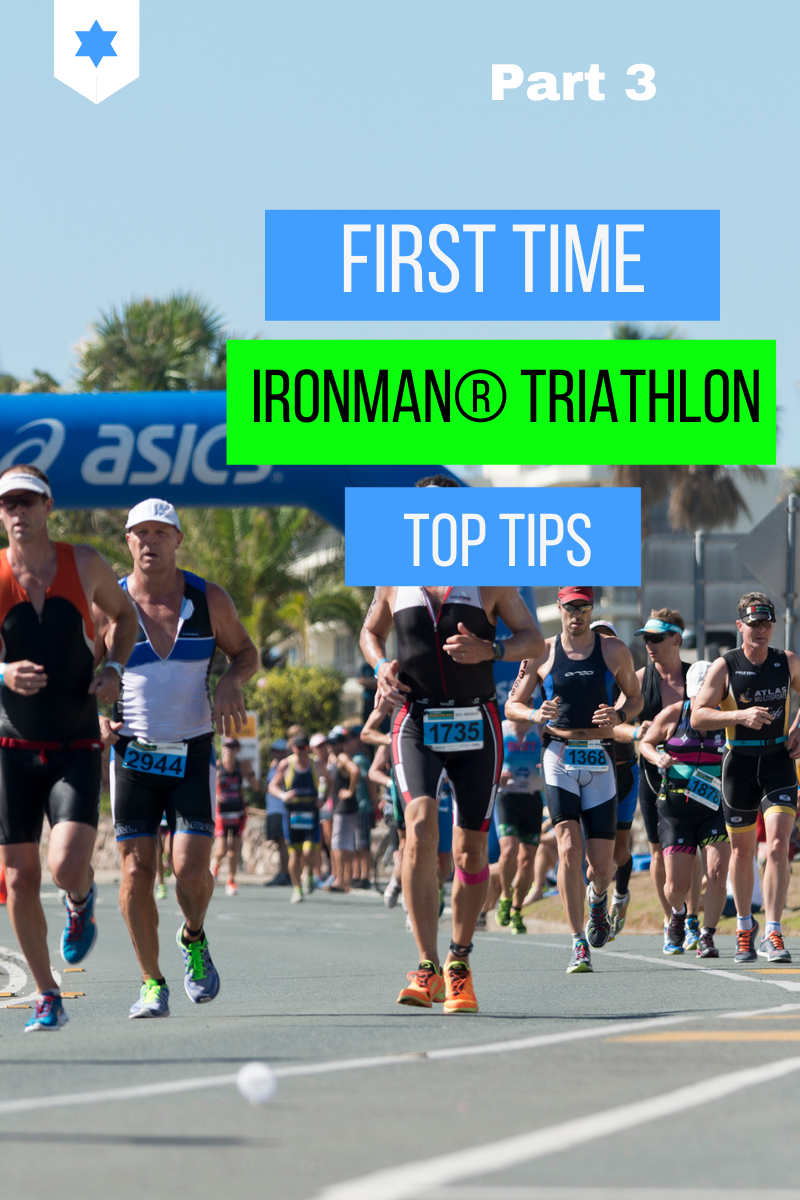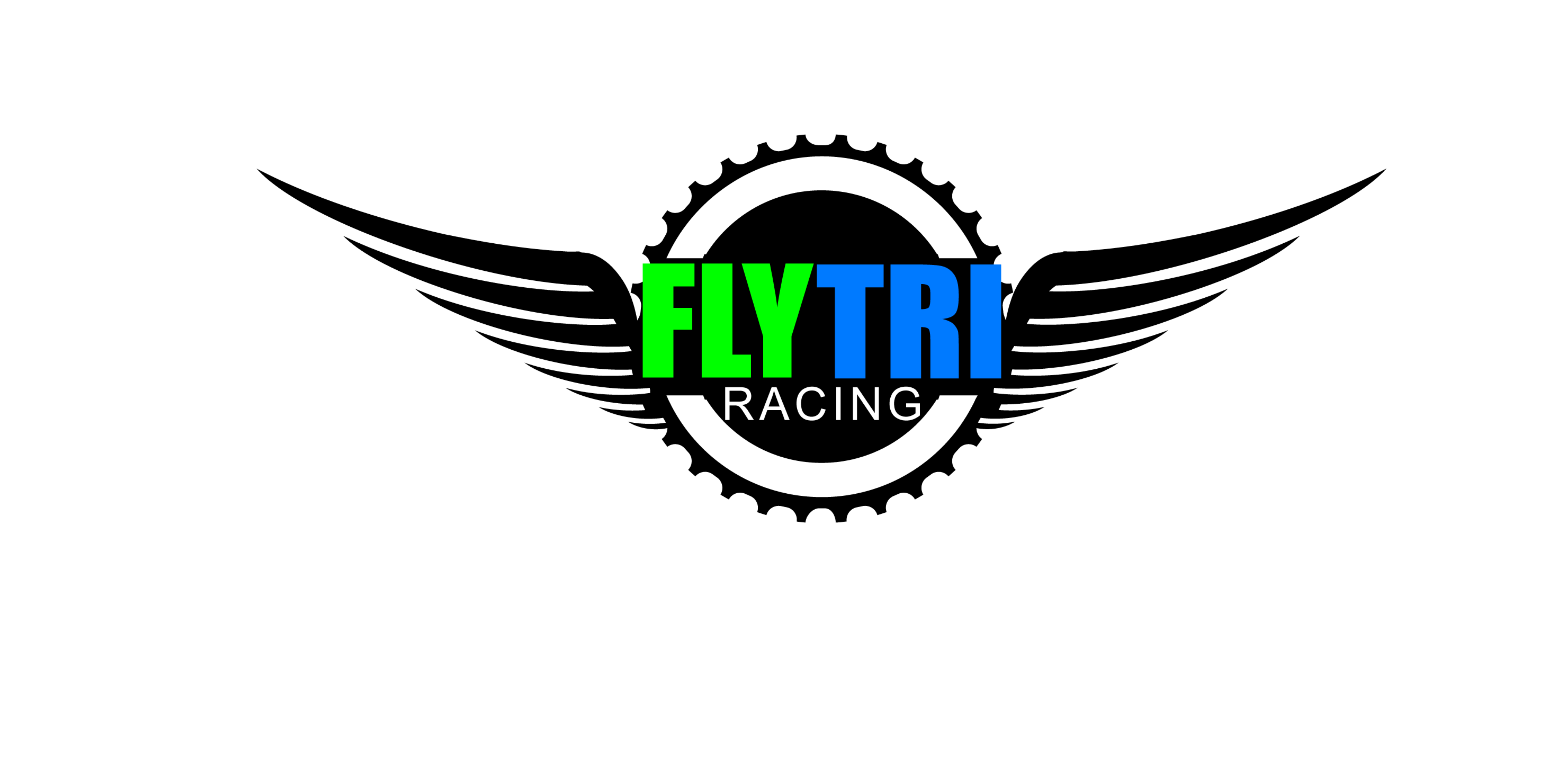By: William Ritter
First Time IRONMAN® Triathlon Top Tips Part 3
This is part three and our final part to the blog series on first time triathlon tips and we will cover Transition 2 (T2), the run section, nutrition and hydration.
If you don’t see the answer to your question, then reach out to me and I will be happy to answer them.
Transition 2 (T2)
Transition 2 (T2) is when you transition from the bike leg to the run leg and is crucial part in your race.
What are “jelly legs”?
You may have heard triathletes talking about “jelly legs” when transitioning from the bike to run. This is normal and doing Brick sessions during training will help you learn to cope with this feeling. To help make it easier make sure that you spend the last five minutes of the bike ride spinning at a higher cadence which will start loosening up your legs in preparation for running. While this sounds counterintuitive, slow down towards the end of the cycling section. It will be very tempting to go for one last hard push, but most novices will benefit by preparing their legs before they start running. The key tip here is walking, not running immediately after getting off your bike, you will not lose any significant amount of time and walking through Transition 2 will give your body time to adjust in preparation for the run.
When you start running, you’ll have jelly legs so start with shorter paces, and spend the first five minutes lengthening your stride and start speeding up as your muscles start to adapt from cycling.
Should I eat in transition?
I like to think of the bike leg as a rolling buffet where your stomach is stationary and your heart rate relatively low. You should try to eat the majority of your race nutrition on the bike. When you get in to transition your heart rate will probably be sky high so not a great time to eat. The general rule of thumb is eat when your heart rate is low. So, concentrate on getting ready for your run, change your shoes, put your number to the front, get your hat and glasses on, re-apply lube to stop you chaffing and get off on your run. Once your heart rate has settled then you can eat if you need to.
The IRONMAN Triathlon Run
Can I wear socks on the run?
Some triathletes start at the sprint distance and move to standard or Olympic distance then to IRONMAN® full distance and always run without socks as they are used to it from the shorter distances. As you know the IRONMAN® run is a full marathon so unless the skin on your feet is like Rhino skin then wear socks!
Can I run across the finish line with my family?
Friends and/or family members are not permitted to cross the finish line or enter the finish chute with participating athletes. This policy will allow each competitor adequate time to celebrate their accomplishment without interfering with other finishers and ensure the safety of all participants, volunteers and fans. Athletes who choose not to respect the policy will receive an automatic disqualification (DQ).
I´m worried about cramping on the run, what can I do?
Cramp is a tricky problem to deal with but, although experts rarely agree on the science behind it, sufficient sodium intake along with adequate water is often helpful in preventing it during long, hot races. Pacing is also critical, as fatigue often plays a big role in muscles locking up, so don’t get too keen too early if you’re prone to cramping.
Can I walk during the run?
If, during your preparation for the race, you’ve discovered that running the entire 42km of the marathon isn’t possible, don’t force it on race day. The run/walk strategy is a more reliable and effective way to get to the finish line. Run/walking gives you a chance to recover, lessens the stress on your legs, reduces your core body temperature and, perhaps more importantly, gives you a chance to actually enjoy the race atmosphere. The ratio of time (running/walking/running) used in the strategy will vary from athlete to athlete but, like all plans during a race, be flexible with it.
Can I carry a phone during the race?
Two-way communication devices, such as walkie-talkies and cell phones, have long been banned on the racecourse. It’s been a difficult rule for officials to enforce, especially as more and more athletes use their cell phones for bike/run data or race-day tracking.
IRONMAN® Nutrition and Hydration
Should I stop at every aid station?
It’s not necessary to stop at every aid station unless you need to re-fuel or have a comfort break. Aid stations vary and can include gels, isotonic drinks, food like bananas, water, ice, cold water sponges and even showers to run through.
How do I fuel?
Fuelling for a long-distance triathlon is something worth planning during training so you can formulate your race day nutrition strategy. Work with your triathlon coach on what works for you. I recommend starting a minimum of 12-16 weeks out of starting working on your nutrition plan as you will want to practice in similar weather conditions and race specific prep sessions.
What is a sweat test, and should I do one?
Sweat testing is usually used with athletes to answer two key questions, how much sweat are you losing during exercise? and what are you losing in that sweat so you can replace it to maintain your performance? This is a relatively easy test to perform during training and the results will help provide you with data to help you hydrate properly and safely on race day. Work with a qualified endurance coach to perform the test and find out what it means for you.
Should I use the on-course nutrition and hydration?
It’s always worth checking what’s on the course for your specific race. For IRONMAN® Texas for example there will be Red Bull, Gatorade & Maurten Gels. As early as you can in training get some of the on-course products and try them out. If you don’t like them or they cause you GI issues, then you know you will need to take your nutrition and hydration with you and put more (just in case) in your special needs bag.
I’ve been using energy gels, but I find them really hard to stomach. Are there any alternatives?
Plenty of alternatives to energy gels have been touted, from marzipan to jelly beans. But the best bet may be to go for something made by an energy manufacturer, so consider trying Clif Shot Bloks (chewy energy blocks) or Infinit Nutrition’s TripWire, both of which have different consistencies to gels.
Ready to Race
Hopefully this series of blogs has covered some questions you were afraid to ask, and you feel better prepared to train and race. During the race remember to write your name on your gear so people in the crowd will be able to shout out your name and give you a boost. As USA Triathlon Coach, Bonnie Caulfield says, “give energy to get energy” which means during the race be thanking volunteers, engaging with spectators and other athletes will distract you from the pain and give you energy reflected back, even though it takes some energy to do tha, but in this case the benefits greatly outway the cost.
Good luck with your training and race!

Ritter, from Tyler Texas, is the Head Coach at Fly Tri Racing. He is a TrainingPeaks Level 2, Ironman U, Tri Sutto Coaching Certified, USA Cycling, and USA Track and Field Level 2 Endurance Certified Coach and USATF Cross Country Specialist. He specializes in coaching triathletes and runners of all abilities. Ritter’s coaching is detailed and based on the individual athlete blending the art and science of coaching. To learn more about Ritter and personal coaching visit www.flytriracing.com.




